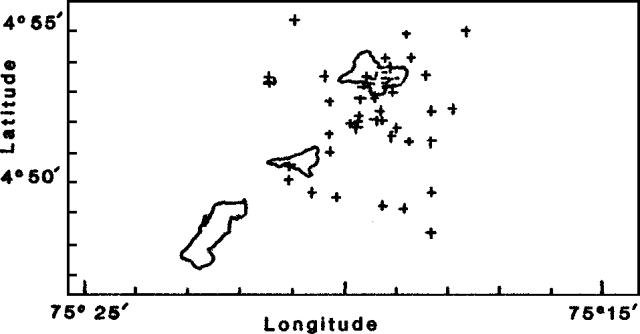Report on Nevado del Ruiz (Colombia) — October 1988
Scientific Event Alert Network Bulletin, vol. 13, no. 10 (October 1988)
Managing Editor: Lindsay McClelland.
Nevado del Ruiz (Colombia) Minor ash emission and continued vigorous seismicity
Please cite this report as:
Global Volcanism Program, 1988. Report on Nevado del Ruiz (Colombia) (McClelland, L., ed.). Scientific Event Alert Network Bulletin, 13:10. Smithsonian Institution. https://doi.org/10.5479/si.GVP.SEAN198810-351020
Nevado del Ruiz
Colombia
4.892°N, 75.324°W; summit elev. 5279 m
All times are local (unless otherwise noted)
The number of earthquakes and seismic energy release remained at high levels during October, continuing the pattern of vigorous seismicity that began to build in late 1987. Tremor amplitude declined slightly. Fluctuations in tremor amplitude were associated with small explosions that briefly emitted ash. A swarm of 212 high-frequency events was recorded 1 October from 1,410 to 1,450. The month's two strongest shocks (M 2.3) occurred on the 9th and 12th. Several of the locatable events were scattered SE of the volcano, while others were centered near the crater at depths of 1-4 km (figure 20). No significant deformation was recorded.
 |
Figure 20. Epicenters of 49 seismic events at Ruiz, October 1988. Courtesy of the Observatorio Vulcanológico de Colombia. |
Geological Summary. Nevado del Ruiz is a broad, glacier-covered volcano in central Colombia that covers more than 200 km2. Three major edifices, composed of andesitic and dacitic lavas and andesitic pyroclastics, have been constructed since the beginning of the Pleistocene. The modern cone consists of a broad cluster of lava domes built within the caldera of an older edifice. The 1-km-wide, 240-m-deep Arenas crater occupies the summit. The prominent La Olleta pyroclastic cone located on the SW flank may also have been active in historical time. Steep headwalls of massive landslides cut the flanks. Melting of its summit icecap during historical eruptions, which date back to the 16th century, has resulted in devastating lahars, including one in 1985 that was South America's deadliest eruption.
Information Contacts: C. Carvajal, INGEOMINAS, Manizales.

